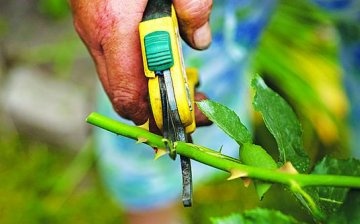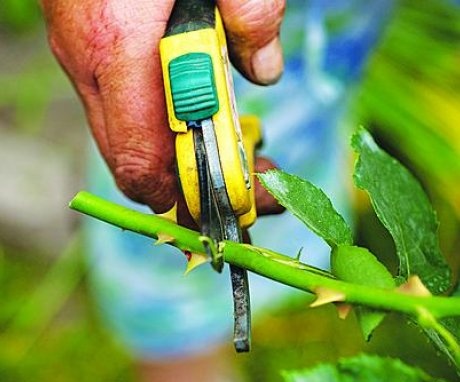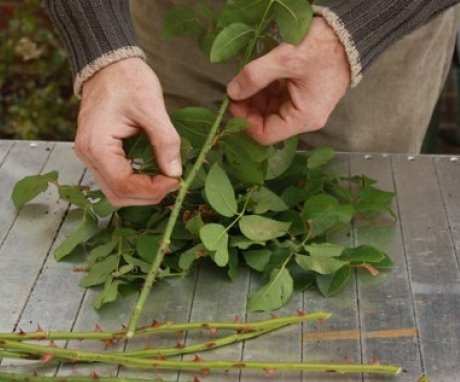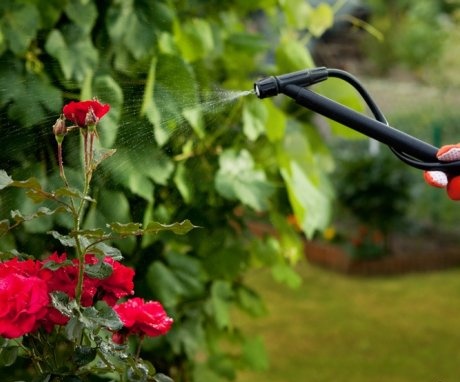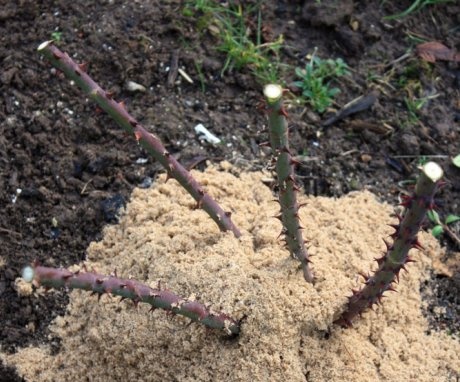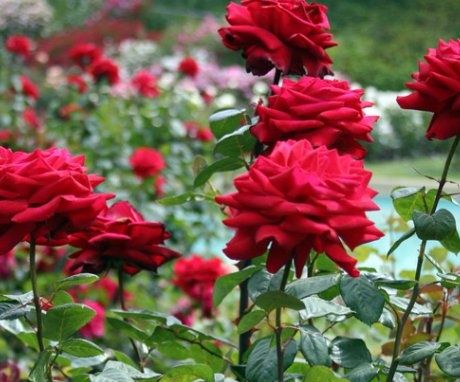Own-rooted roses: advantages and rules of growing
Roses are called the queens of flowers and they rightfully occupy one of the leading places among all types and varieties of flowering plants. Many legends, legends and signs are associated with roses. They often become heroines of fairy tales and poems. These are plants from the rosehip family and they appeared as a result of human labor. Most varieties are obtained through repeated selection experiments and selections, but some varieties are wild-growing.
In ancient times roses cultivated along with medicinal plants. They were prized for their beauty and aroma. Perfume was made on the basis of rose oil, and the flowers themselves were considered a symbol of love, beauty and fidelity. Knights expressed sympathy for the ladies by presenting them with roses, and images of flowers often adorned the coats of arms of noble gentlemen. Therefore, it is not surprising that today roses are grown everywhere and they do not lose their popularity.
Today, many species and varieties of these amazing flowers have been bred, and as a result of their work, they were divided into two groups - self-rooted and grafted. When creating a rose garden, many cannot decide which flowers are best to grow, and some are even unfamiliar with such a division.
Content:
- What are own-rooted roses and what are their advantages
- How to properly propagate and plant self-rooted roses
- Preparation of planting material
- The main secrets of caring for rose bushes
- How to help roses survive the winter
- How to choose rooted or grafted roses
What are own-rooted roses and what are their advantages
Grafted roses are obtained by budding, grafting them to alien, stronger and more powerful roots. Most often, the stock is rose hip, therefore, such roses often run wild. During wintering, plant shoots often freeze out, and the maternal roots survive. And in the spring, rose hips flaunt in place of rose bushes. But if grafts of budded roses are buried into the ground to a depth of at least 2.5 cm, then such a degeneration can be avoided and a higher winter hardiness can be achieved.
Own-rooted roses are propagated by the method cuttings, layering and by dividing bushes.
They have a lot of advantages and differ:
- frost resistance
- immune to disease
- an abundance of flowers
- inability to form root shoots
Such bushes will not become wild, and with an unsuccessful wintering, new young twigs will grow from the buds on the root collar, the bush will rejuvenate and will not lose its decorative effect.
But despite all the positive characteristics, growing self-rooted roses is fraught with a number of difficulties. Young seedlings will need at least two years to grow strong enough roots. Therefore, young rose bushes need careful care during this period, especially in winter. And also plants are more demanding on the quality of the soil.
How to properly propagate and plant self-rooted roses
Of all the methods of propagation of self-rooted roses, the most effective is the method of green cuttings.Rooting stem cuttings with feeding leaves is quite simple and even an inexperienced gardener can do. For such reproduction, a lot of space is not required, and it is also not necessary to master complex methods of budding.
For green cuttings, you should select roses that have high rooting rates of cuttings. Preference should be given to:
- Easily rooted - large-flowered and small-flowered climbing, semi-climbing and miniature roses. The rooting rate of plants from this group reaches one hundred percent.
- Medium rooted - floribunda, polyanty, remontant, tea-hybrid and park ("Albe" and "Rugose") roses.
When planting own-rooted roses, the degree of growth of the bushes should be taken into account, this will help to correctly place the plants on the site. The place should be chosen sublime, because roses love warmth, light and air. The key to a successful cultivation of roses is the correct preparation of the soil and planting material.
Preparation of planting material
The best time for grafting self-rooted roses is early spring, immediately after the soil thaws. But it is rarely possible to meet this time period, so cuttings are harvested in summer and autumn.
In the summer, it will take more effort to care for the cuttings, and in the fall, roses take longer to take root due to a drop in temperature.
The preparation of cuttings is carried out in several stages:
- One-year healthy shoots are selected and cut into fragments of 20-25 cm, removing peduncles and lower leaves.
- The prepared planting material is placed in a honey or manganese solution; the cuttings can also be kept in a growth stimulator.
- After processing, the cuttings should be dried and cut off the bottom at an angle of 45 degrees with a sharp tool. The cut should be as close to the lower kidney as possible.
- Immediately after preparation, the cuttings are planted in a container with prepared peat soil, which can be bought at the store. The planting material must be buried a few centimeters so that two buds are in the ground and 2-3 on the surface.
- The containers themselves are buried in the ground so that the edges of the pots are at ground level and watered abundantly. From above, young plants are covered with a glass jar, creating the effect of a greenhouse and keeping the desired temperature (24-27 degrees). It will take about a month for the roses to take root, and at this time you need to carefully monitor the moisture level in the jar.
- If the walls of the can are covered with water droplets, then the air humidity is within normal limits. But as soon as the droplets begin to disappear, the jar must be removed, the cuttings and the container itself must be abundantly sprayed, and then placed in place.
- You should also water the ground around the cans and raise them for a few minutes every 2-3 days, providing the plants with fresh air.
After a month, the cuttings will begin to overgrow with young leaves, but the shelter is not removed until the rose is placed under it. During this period, young plants are gradually hardened, opening them in the evenings. Every day, the time when roses are left without shelter should be increased. And after removing the caps, the rose bushes should be provided with shade and gradually open access to the sun.
When rooting in autumn, the banks are not removed all winter, covering them with spruce branches.
After complete rooting and development of a full-fledged root system, self-rooted roses can be transplanted. For this, planting pits are prepared with a diameter and depth of half a meter. The bottom of the holes is equipped with high-quality drainage, which is used as expanded clay or other suitable material that prevents water stagnation.
The next layer of fertilizer is poured, which consists of humus, ash and dolomite flour. A seedling is placed in the formed mound and gradually sprinkled with fertile soil. After planting, the roses are watered abundantly.
The main secrets of caring for rose bushes
After planting, self-rooted roses should be provided with full care, which consists in regular watering and fertilization. It is also important to regularly loosen the soil, avoiding the formation of a crust on its surface:
- Irrigation. Watering should be abundant and regular, because even a slight drought can lead to the fact that plants stop growing and develop, and also lose their decorative effect. By autumn, the number of watering is reduced, and in winter they stop altogether and resume with the onset of spring heat.
- Fertilizers. In the first half of the summer season, fertilizers are applied twice a month. It is recommended to introduce organic matter with the addition of minerals in liquid form. From the second half of July, fertilizers should be used that do not include nitrogen, but potassium and phosphorus predominate. This will help slow the growth of the bushes.
Plants of the first year of life enter the flowering time towards the end of summer. By this time, they are rooting and the growth of the root system. Therefore, often at the first frost, roses still bloom and the bushes are strewn with unopened buds.
Due to the fact that these plants were bred with the help of humans, they cannot prepare themselves for winter. Therefore, closer to autumn, care is aimed at accelerating the ripening of the shoots. To do this, stop cutting flowers. This approach will help to properly prepare the plants for wintering.
How to help roses survive the winter
In the autumn period, all efforts are directed to helping the garden survive the frost. For this, a preparatory pruning rose bushes, which consists in removing all tops and young branches.
The bushes themselves should be spud, creating an embankment of at least 20 cm.
When the frosts approach the 10-15 degrees mark and the soil begins to freeze, then you should take care of additional shelter, which is used as spruce branches made of dry foliage, sawdust or needles, 20-25 cm high.
But for a successful overwintering of plants, not only air temperature is important. Abundant soil moisture helps to survive frosts. But in the spring, it is necessary to timely rid the bushes of spruce branches in order to prevent the soil from drying out and rotting of the roots. You also need to ensure the drainage of excess water. But gardeners recommend removing the winter shelter in two stages: after the snow melts, the spruce branches are removed, and when the earth opens up, the bushes will get bored.
How to choose rooted or grafted roses
Both self-rooted and grafted crops have their advantages. A good stock will give a powerful impetus to the development of plants, and its own root system will simplify growing and maintenance. Selecting a particular group roses depends on the climate and your own preferences. In the south, where hot and dry weather prevails, it is troublesome to grow own-rooted crops, because it is difficult to calculate the amount and frequency of irrigation.
In colder regions, self-rooted roses grow better, but they need to provide reliable protection from frost, additionally covering them with a thick layer of snow. Or grow plants in containers, which are planted in the ground for the summer, and brought into the room for the winter.
If you have the desire and patience, any flowers can be planted in the garden.
It all depends on the taste of the gardener and his willingness to provide proper care. In response, roses will give the owner flowering bushes that will flaunt in the garden to the envy of neighbors and friends.
More information can be found in the video:





